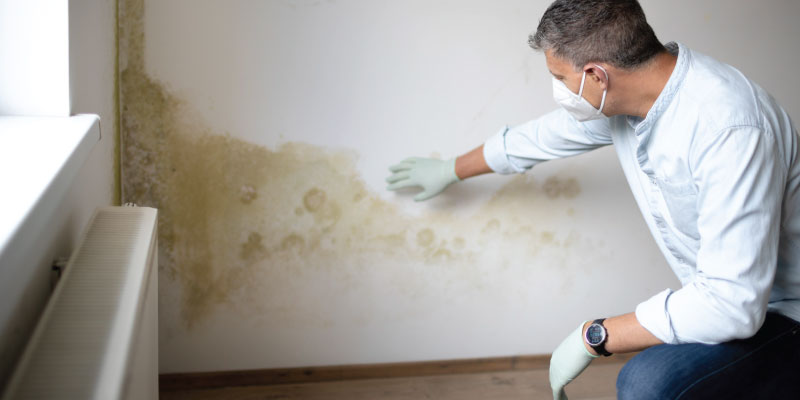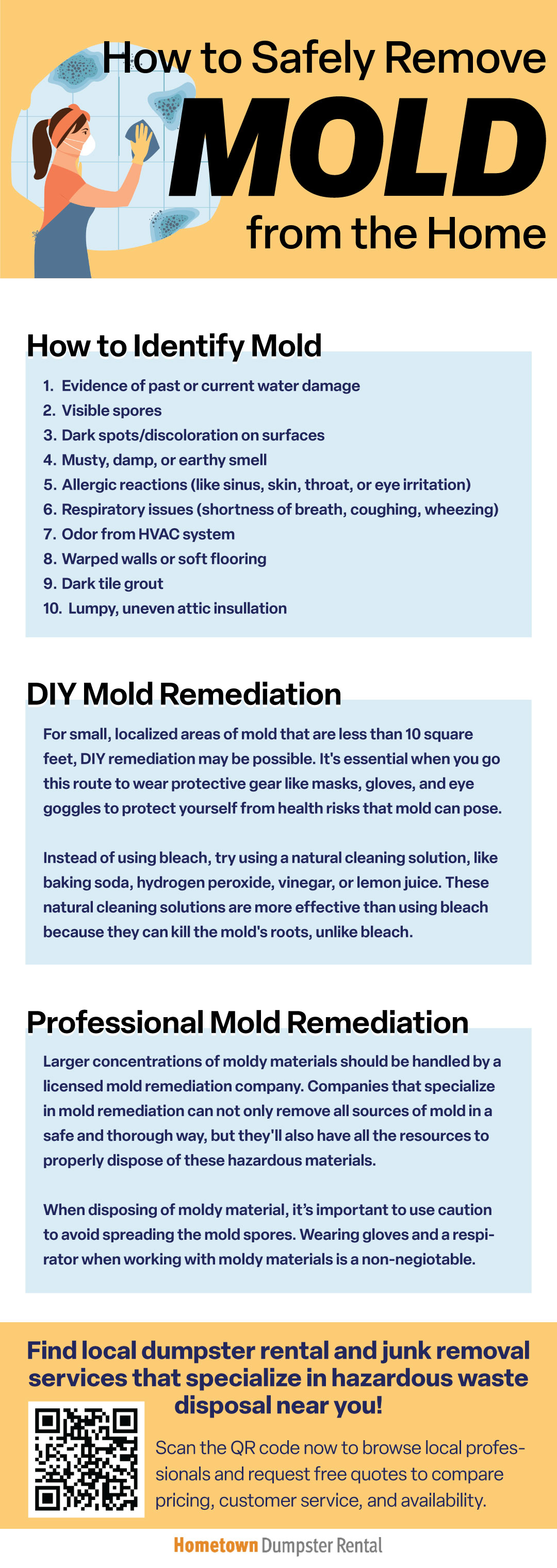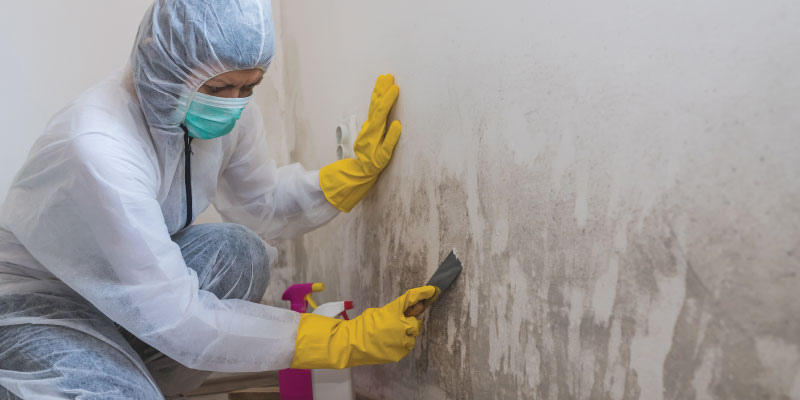
Updated February 4, 2024
There are over 1,000 different types of mold found in the U.S. alone that are toxic when present indoors.
That’s why it’s particularly important to handle moldy drywall, lumber, flooring, and other building materials with care.
When disposing of moldy building materials, it’s not a good idea to just throw them in the dumpster. In fact, some dumpster rental companies require that they are handled a special way to avoid spreading the mold spores.
Here’s a quick overview of mold and how to dispose of it safely.
Jump to:
Find temporary dumpster rentals near me

What Is Mold?
It’s impossible to completely avoid mold. It’s all around us–in the air, on the floor, outside.
Mold is necessary in nature because it helps in the decomposition process. However, it’s not a good thing to have in your home.
Breathing in airborne mold or mold spores can adversely affect people sensitive to mold or that have a poor immune system.
Mold can grow on pretty much any surface in the home, such as drywall, tile, wood, and carpeting, and needs moisture to grow and multiply.
So, the key is keeping your home free of standing water, leaky pipes, or other water leaks/spills. The Centers for Disease Control and Prevention (CDC) also suggests keeping your home’s humidity level between 40 and 60 percent to slow the growth of mold.
Health Effects
People sensitive to mold may experience respiratory problems when exposed to excessive amounts of mold.
Common symptoms include shortness of breath, eye irritation, wheezing, skin irritation, stuffiness, and infections in the lungs.
Excessive mold may cause more serious health effects in people with certain respiratory related diseases, such as asthma, or in those suffering from any type of immune deficiency disease.
How to Identify Mold in Your Home
There are several ways to spot mold growing inside a home, the first being evidence of past or current water damage. Standing water especially can create a breeding ground for mold on nearly any surface.
Common signs of mold:
- Visible spores
- Dark spots/discoloration on surfaces
- Musty, damp, earthy smell
- Allergic reactions (like irritated sinuses, skin, throat, or eyes)
- Respiratory issues (shortness of breath, coughing, wheezing)
- Odor from HVAC system
- Warped walls or soft flooring
- Dark tile grout
- Lumpy, uneven attic insulation
If you suspect mold in your home, remediating it should be left to qualified professionals. When in doubt, hire a professional mold testing company to confirm its presence and identify the source of mold.
Mold Remediation

Mold not only causes health problems, is unsightly, and smells bad in the home, but it is difficult to slow its growth and can be dangerous to remove.
For small, localized areas of mold that are less than 10 square feet, DIY remediation may be possible. It's essential when you go this route to wear protective gear like masks, gloves, and eye goggles to protect yourself from health risks that mold can pose.
Instead of using bleach, try using a natural cleaning solution, like baking soda, hydrogen peroxide, vinegar, or lemon juice. These natural cleaning solutions are more effective than using bleach because they can kill the mold's roots, unlike bleach.
If the mold isn't properly and thoroughly removed, it will continue to grow and spread, further worsening your mold issue.
Larger concentrations of moldy materials should be handled by a licensed mold remediation company. Companies that specialize in mold remediation can not only remove all sources of mold in a safe and thorough way, but they'll also have all the resources to properly dispose of these hazardous materials.
When disposing of moldy material, it’s important to use caution to avoid spreading the mold spores. Wearing gloves and a respirator when working with moldy materials is a non-negiotable.
Place all moldy materials in airtight plastic bags or wrap in polyethylene sheeting secured with duct tape before removing the material from the remediation area. Be sure to address the source of the mold if you are remodeling or renovating the area.
Check for leaky pipes and make sure the ground outside drains away from the house. If the mold problem stems from excessive humidity, use a dehumidifier to lower the humidity.
Lastly, when you call to rent a roll-off dumpster, be sure to inform them you plan to dispose of moldy building materials. They can let you know if there are any special requirements you need to follow.
Get free dumpster rental quotes in my area
Learn more:


